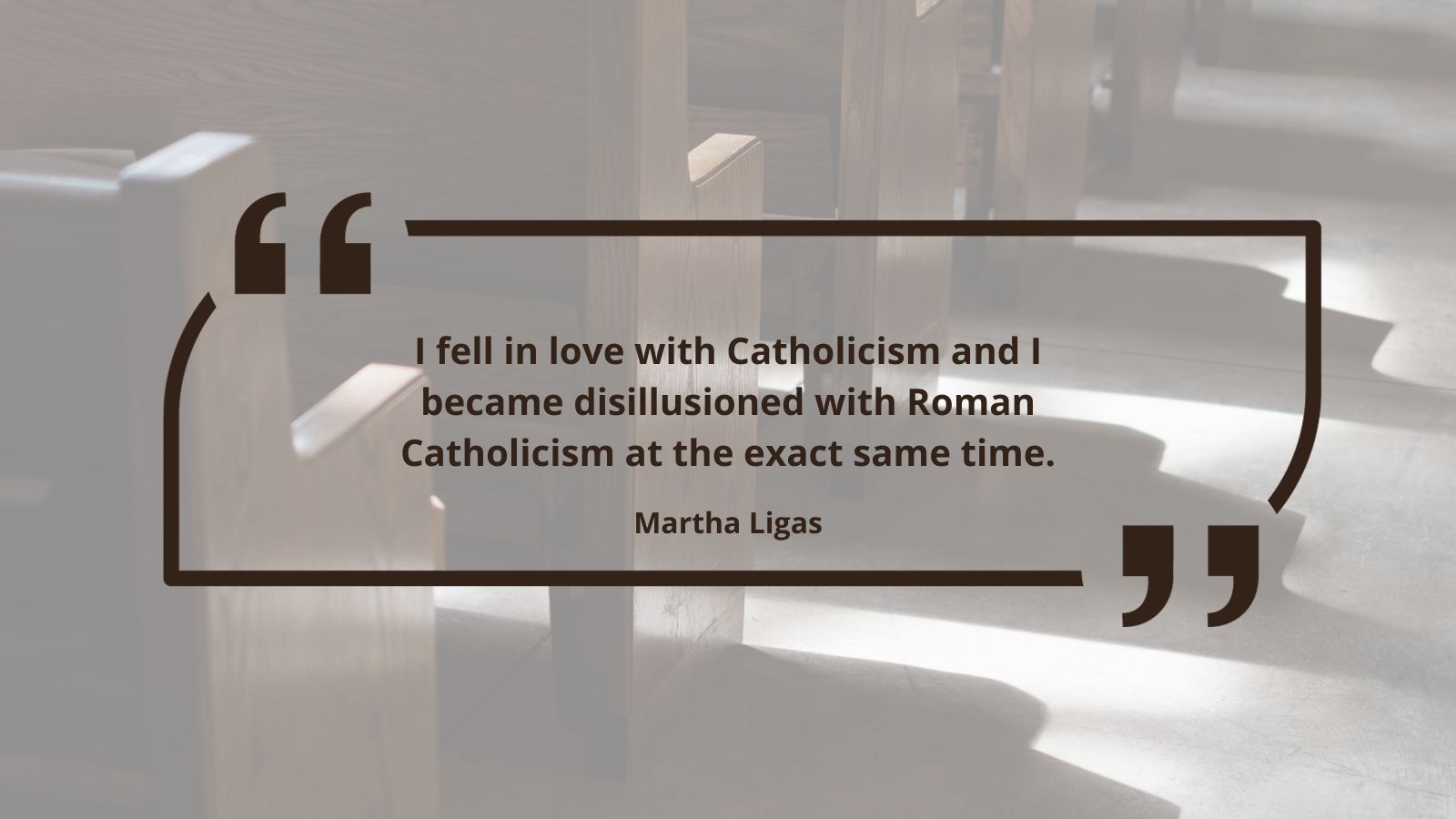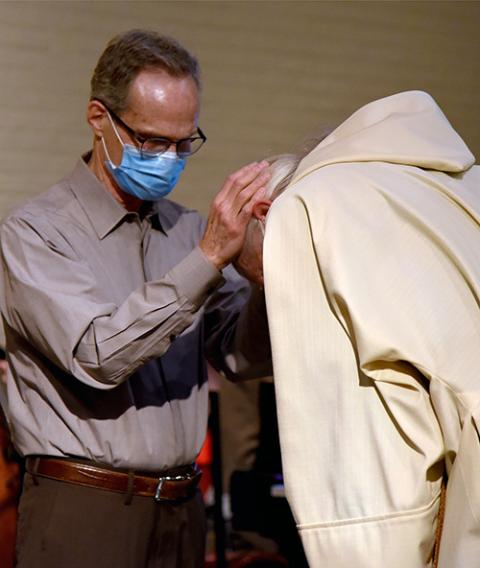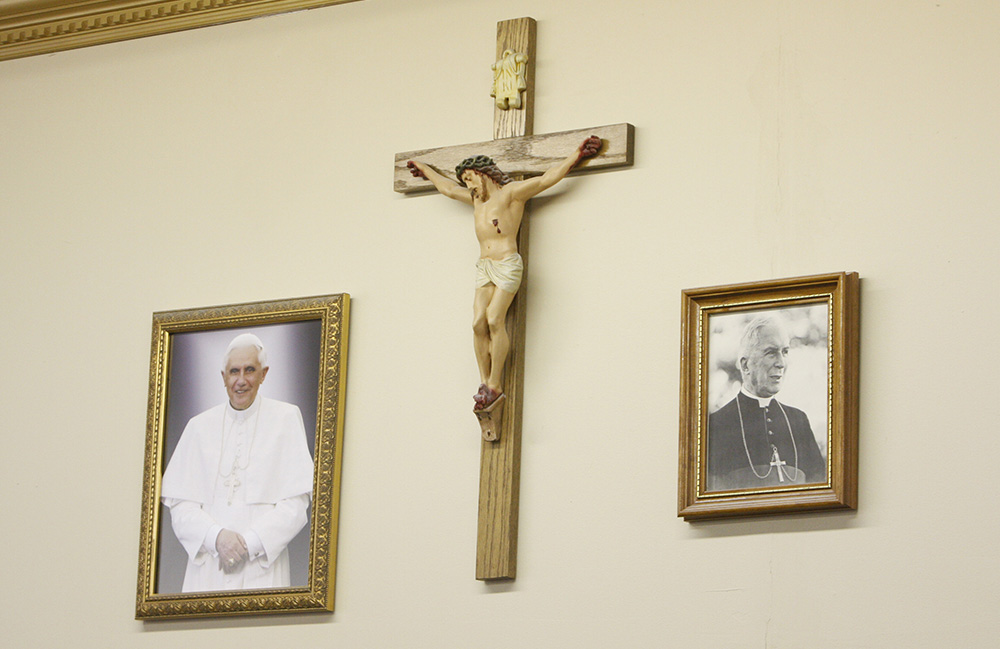Excellent article by Tom Roberts In National Catholic Reporter
“Martha Ligas learned about the Community of St. Peter in Cleveland six months before she ventured into a worship service. She hesitated because she did not want to step over an invisible line that she had straddled for so long, one foot in and one foot out of the Roman Catholic Church.
For this young but lifelong Catholic, a product of Catholic schooling from elementary through Loyola University Chicago and an advanced degree in ministry at Boston College, leaving the institutional structure was a difficult decision.
"Catholic is just how I see the world," she said. "I knew nothing else than Catholic."
The Community of St. Peter is an independent community, not affiliated with the Cleveland Diocese, that self-describes as Catholic, eucharistic, and "preserving and renewing a living tradition." It formed in April 2010 when a significant portion of St. Peter's Parish refused to disperse to other parishes after Bishop Richard Lennon closed it as part of a diocesan-wide downsizing.
The Community of St. Peter is representative of one expression that has emerged amid the vast Catholic diaspora in the United States.

(NCR graphic/Toni-Ann Ortiz)
Ligas, 32, is part of that large, if not precisely describable, sea of Catholics who have left the institution but retained a connection, often highly personalized and in new forms, to the tradition.
Some communities in the far-flung diaspora seem to be practically dealing with questions and thorny issues previously prohibited from being raised in institutional settings but now integral to the synodal processunderway as a result of the Francis papacy.
In Portugal, Pope Francis may have been expressing the feeling of many of those who belong to modern independent eucharistic communities (often referred to as IECs) when he told the gathering at World Youth Day: "There is room for everyone in the church and, whenever there is not, then, please, we must make room, including for those who make mistakes, who fall or struggle."
He continued, "The Lord does not point a finger, but opens wide his arms: Jesus showed us this on the cross. He does not close the door, but invites us to enter; he does not keep us at a distance, but welcomes us."

A reconciliation service at the Community of St. Peter in Cleveland during Lent 2022 (Peggy Turbett)
Inclusion without qualification is a familiar theme in independent eucharistic communities, especially when it comes to women, the LGBTQ community, and the divorced and remarried. Social justice themes, outreach to those on society's margins, are also prominent, far more likely to be prioritized on websites than doctrinal or devotional elements of communal life.
No simple or single reason explains why people leave the institutional church. Nor is it easy to characterize groups that claim Catholic identity either historically or those formed more recently outside the institutional boundaries as parishes closed or when a bishop or new pastor decided to upend all that was in place.
Once upon a time we labeled them "fallen away," "lapsed," "ex" or worse. They were Catholics who had left the fold for any number of reasons. Once upon a time, they also were rare enough to stand out, often embarrassed enough to try to keep the leaving quiet. They were branded people.
Not any longer.
Former Catholics are everywhere. There are millions of them. According to a 2008 Pew Research study, one in 10 U.S. adults at the time was a former Catholic. In real numbers, that amounted to 28.8 million former Catholics. Taken as a single entity, they would make up the second-largest denomination in the country after Catholics.
Some of the drop-off has to do with generational differences and a steady decrease in formal religious affiliation, according to a 2021 Gallup Poll.
While the aggregate numbers tell a broad story, the Catholic diaspora, in differing degrees detached from institutional Roman Catholicism, is a diverse and complex reality. Not a few of its manifestations take shape in communities that claim the name Catholic, as well as deep roots in that tradition.

Portraits of Pope Benedict XVI and Archbishop Marcel Lefebvre, founder of the traditionalist Society of St. Pius X, flank a crucifix at St. Michael the Archangel Chapel in Farmingville, New York, in this 2009 photo. (CNS/Gregory A. Shemitz)
One website lists more than 300 independent eucharistic Catholic communities in 41 states plus the District of Columbia. Not all of them are liberal groups. Some, such as the Society of St. Pius X and the Mount St. Michael community of Spokane, Washington, are ultraconservative. NCR has not attempted to verify the existence of all of them on the list. At the same time, it is clear the list is not exhaustive.
The diaspora would also include the various branches of Roman Catholic Women Priests, as well as a broad network of communities led by ordained women.
An uncertain future
The renowned Czech theologian and philosopher Msgr. Tomas Halik posits a dark time ahead for the church if "it fails to impress a profound transformation not only on ecclesial structures, but on the existential and spiritual dimension of faith," according to a review of his book The Afternoon of Christianity: Courage to Change….”


No comments:
Post a Comment